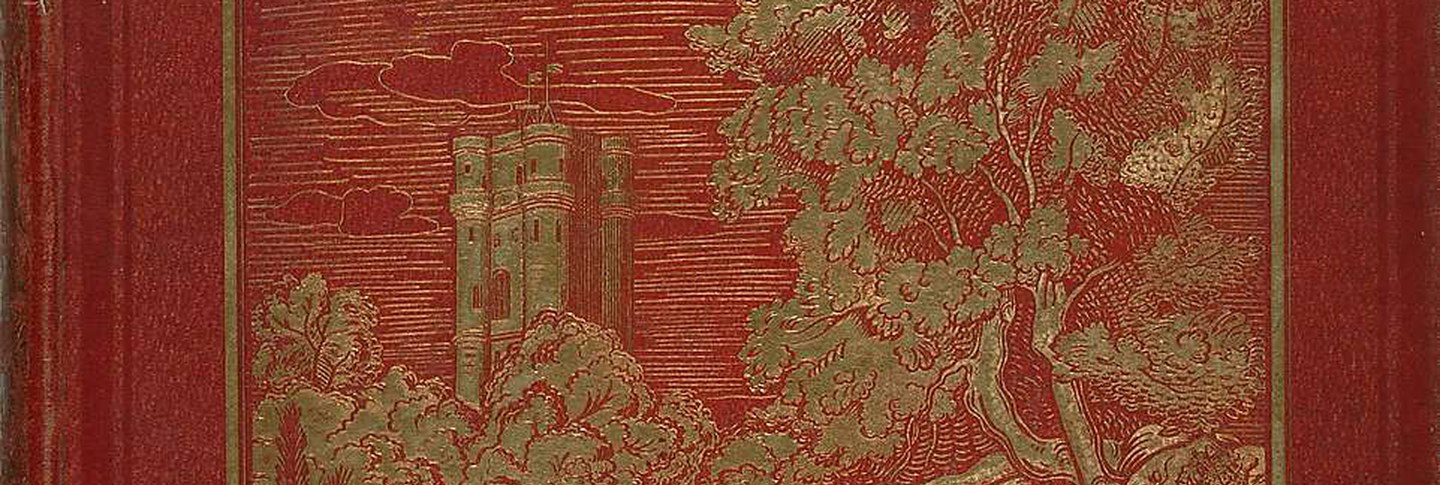Beginning in the 1830s, the printing industry discovered a variety of techniques that made it possible to produce books more quickly. Among these techniques was the mechanical production, decoration, and labeling of cloth bindings. Before this point, most bookbindings, however humble or luxurious, were made by hand. After the introduction of publishers’ bindings (or edition bindings) on cloth, hand bookbinding was the exception rather than the rule.
Nineteenth-century publishers’ bindings acted as advertisements for the text within. The most effective publishers’ bindings were dynamic, bright, colorful, and made reference to the books’ contents. Before this period, a book collector would have commissioned a binder to create exactly the right binding for a given book or budget. In the nineteenth century, publishers had to cast a wider net. They began investing in design, with the idea of capturing the interest of the growing mass of casual readers. For this reason, publishers’ bindings are of great interest to cultural historians, who consider them manifestations of the period’s aesthetics and values.
Many of the publishers’ bindings at Dumbarton Oaks accompany books about gardening. Floral patterns have always been popular motifs for bookbindings. Books about gardens presented a design opportunity: the binding could refer to and illustrate the subject matter at hand.









